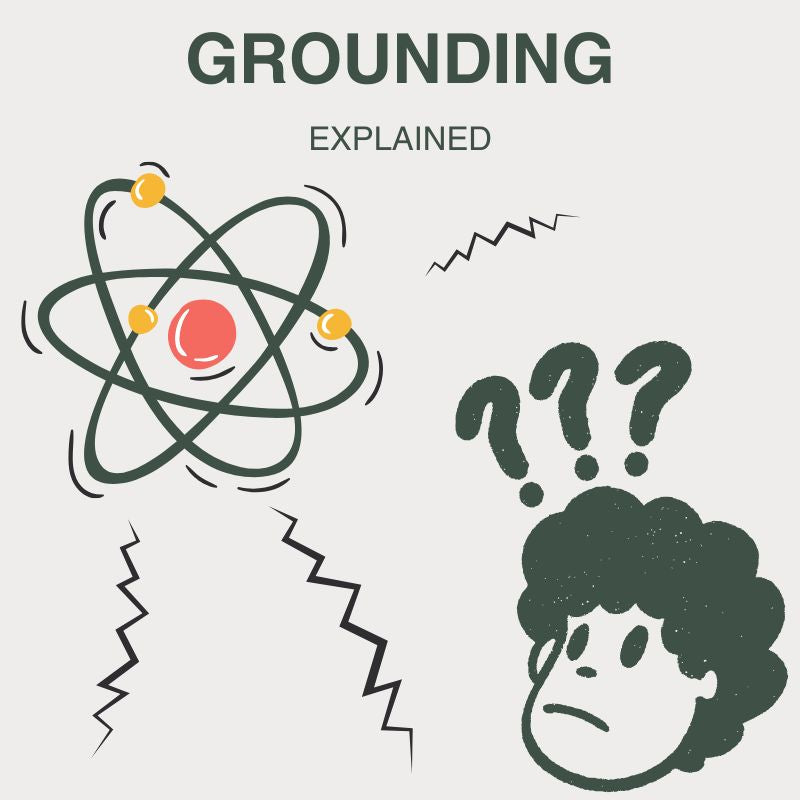
The Physics of Grounding: How Earth’s Energy Supports Our Health
Grounding, also known as earthing, is a natural practice that has been gaining attention not only in the wellness world but also in scientific circles. While it may seem like a simple act—walking barefoot on the Earth, lying on the grass, or sleeping on a grounded sheet—the mechanisms behind grounding are deeply rooted in physics. At the intersection of electromagnetism, biology, and human health, grounding offers a unique bridge between our bodies and the Earth’s energy system.
To understand grounding, we must first recognize that the human body is an electrical organism. Our cells use electrical impulses to communicate, our hearts beat due to electrical signals, and our nervous system operates through bioelectrical pathways. These functions are highly sensitive to the environments we live in. In today’s world, most of us are surrounded by artificial electromagnetic fields (EMFs) from phones, computers, Wi-Fi, and power lines. We also spend much of our time indoors, wearing rubber-soled shoes, completely insulated from the Earth’s surface. This disconnection can leave our bodies out of balance—electrically charged and vulnerable to oxidative stress.
Oxidative stress occurs when there’s an imbalance between free radicals—unstable molecules missing electrons—and the antioxidants that neutralize them. Free radicals can damage cells, tissues, and DNA, contributing to inflammation, aging, and diseases such as cardiovascular issues, autoimmune disorders, and even cancer. This is where grounding comes into play.
The Earth carries a subtle but constant negative charge, filled with free electrons generated by natural processes such as lightning and solar radiation. When our skin touches the Earth or a properly grounded conductive surface, these electrons flow into our body. It’s a simple act of charge equalization—like neutralizing static electricity by touching a metal surface. In this case, the Earth acts as a limitless source of electrons, and our bodies act as conductors ready to receive them.
These incoming electrons are highly effective at neutralizing free radicals. They donate electrons to the unstable molecules without becoming unstable themselves, which helps reduce inflammation and oxidative stress. From a physics perspective, it's a flow of energy that restores balance, reduces excess positive charge in the body, and stabilizes our bioelectrical system.
Research supports these effects. Grounding has been associated with better sleep, reduced cortisol levels, improved heart rate variability, faster recovery from injuries, and a calmer nervous system. Thermal imaging has shown that areas of the body with visible inflammation cool down after grounding. Blood studies reveal less clumping of red blood cells, which may improve circulation and oxygen delivery. People often report feeling more relaxed, sleeping more deeply, and experiencing less chronic pain after regular grounding sessions.
But perhaps the most profound aspect of grounding is its simplicity. In a society constantly seeking high-tech solutions for health problems, grounding reminds us that nature has always had a role in healing. It requires no prescription, no equipment beyond a patch of earth or a conductive mat, and no complex technique. It simply requires us to reconnect—to physically return to the Earth’s surface and allow the flow of electrons to do what nature designed it to do: bring us back to balance.
By understanding the physics of grounding, we can begin to appreciate that we are not separate from nature—we are a part of it. The Earth is not just the ground beneath our feet; it’s a living, energetic system we can align with. And in that connection, we find not only better health but also a deeper sense of calm, clarity, and belonging.
